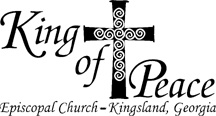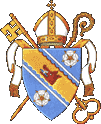
105 years ago, Albert Einstein wrote a scientific paper that changed the world of physics. Among other things, Einstein proclaimed that light was both a particle and a wave. This notion was so radical that it took 20 years to really be acknowledged and even longer to be adequately validated by research to become part of a scholarly consensus.

Einstein's work was at the forefront of what we now call Quantum Physics. As physicists dove under the layers of the visible world to explore subatomic particles, they found in their mathematic equations an interconnectedness that surprised and sometimes frightened them.
The problem with light had been described in either-or terms. Light was either disconnected particles or an interconnected wave. But Einstein theorized and others proved that light is both particle and wave. Neither particle theory nor wave theory can describe light. This understanding of light has now become scientific dogma. In fact, this discovery has been part of the push in Quantum Physics to understand the interconnectedness of all things.
In the Quantum universe, relationships are more important to study than the particles themselves. We once saw the world as filled with more than 90% dark matter, or the absence of stuff. But now scientists can find and show connections between particles where no matter connects the two. There is an essential connectedness among all things.
I write this as tomorrow is Trinity Sunday, the only day of the church year devoted to a doctrone of the church. The
readings for tomorrow from the New Testament are ones in which references to Father, Son and Holy Spirit are named in one passage. The word Trinity itself does not appear in scripture, but the idea of the one God being Father, Son and Holy Spirit does. And so I look to scientific understandings which show both/and as possible as I prepare to speak of God as both three and one.

These understandings from Quantum physics would not surprise St. Patrick, or early Christians for that matter, who understood God to be both three persons and one God. Neither the idea that God is three, nor the idea that God is one, could work alone to describe the attributes of God. God is three persons so completely interconnected as to be one. And we, who are made in the image of God, long to be part of that interconnectedness, that
koinonia (the New Testament Greek word for communion). This is why St. Augustine wrote, that our hearts are restless until they find rest in God. We who are created in the image of God’s communion long for communion with God and with others.
We act out this Christian belief in koinonia each time we celebrate a communion service. Each of us comes as an individual (particle). We bring our own uniqueness. Through the words and actions of the service we are drawn together (wave). We say the same words, in order to commune with God. Through that communion with God, we realize that as children of God, we are brothers and sisters to all the other people on earth. Our connection to God allows for a deeper connection to other people. This is how we in our imperfect ways participate in the very life of the Trinity.
peace,
Frank+
The Rev. Frank Logue, Pastor
Labels: Gospel reading, Trinity


 Einstein's work was at the forefront of what we now call Quantum Physics. As physicists dove under the layers of the visible world to explore subatomic particles, they found in their mathematic equations an interconnectedness that surprised and sometimes frightened them.
Einstein's work was at the forefront of what we now call Quantum Physics. As physicists dove under the layers of the visible world to explore subatomic particles, they found in their mathematic equations an interconnectedness that surprised and sometimes frightened them.  These understandings from Quantum physics would not surprise St. Patrick, or early Christians for that matter, who understood God to be both three persons and one God. Neither the idea that God is three, nor the idea that God is one, could work alone to describe the attributes of God. God is three persons so completely interconnected as to be one. And we, who are made in the image of God, long to be part of that interconnectedness, that
These understandings from Quantum physics would not surprise St. Patrick, or early Christians for that matter, who understood God to be both three persons and one God. Neither the idea that God is three, nor the idea that God is one, could work alone to describe the attributes of God. God is three persons so completely interconnected as to be one. And we, who are made in the image of God, long to be part of that interconnectedness, that 























































0 Comments:
Post a Comment
<< Home